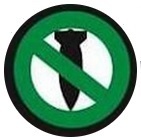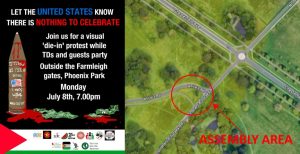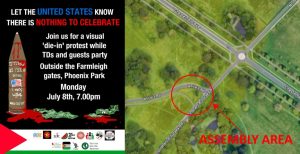Martyrs’ day in Tunisia: how much has changed?
The brutal state suppression of a march to honour the dead of the 2011 revolution shows what little progress has been made
David Charles for Open Democracy, part of the Guardian Comment Network
guardian.co.uk, Tuesday 10 April 2012 16.06 BST
I was walking around the central market in Tunis this morning, when I passed by a peaceful march. They carried banners proclaiming: "Never forget why they died – freedom and dignity". The marchers were young and old, women, men and children, wearing smiles with their flags. So, being in full support of marches in general and this sort of march in particular, I joined them.
We marched on past the central market and across Habib Bourguiba avenue – the main street in central Tunis. There, the police carefully chaperoned us across the road and to the headquarters of one of the unions, where we stopped. That, I thought, was that. The chanting stuttered and ceased. Some people left the crowd, which was only ever about 50-60 people, others stood around amiably, chatting and smoking, leaning on their signs, wrapped in their banners.
I asked one of the men what this was all about. He explained that today was Martyrs’ Day in Tunisia and that these people were unhappy with progress after the revolution. That seemed fair enough and I was about to leave when a journalist tapped me on the shoulder. He added that the group intended to march down Habib Bourguiba avenue, but that protests there had recently been banned. This sounded more interesting. Still, though, the protest didn’t look like much. There were no angry young men – from their dress, I reckoned it was just a small group of liberal middle-class Tunisians. Then, without a signal, we started from the union building to Habib Bourguiba, in defiance of the police presence and the banning order.
Martyrs’ day in Tunisia: how much has changed?
The brutal state suppression of a march to honour the dead of the 2011 revolution shows what little progress has been made
David Charles for Open Democracy, part of the Guardian Comment Network
guardian.co.uk, Tuesday 10 April 2012 16.06 BST
I was walking around the central market in Tunis this morning, when I passed by a peaceful march. They carried banners proclaiming: "Never forget why they died – freedom and dignity". The marchers were young and old, women, men and children, wearing smiles with their flags. So, being in full support of marches in general and this sort of march in particular, I joined them.
We marched on past the central market and across Habib Bourguiba avenue – the main street in central Tunis. There, the police carefully chaperoned us across the road and to the headquarters of one of the unions, where we stopped. That, I thought, was that. The chanting stuttered and ceased. Some people left the crowd, which was only ever about 50-60 people, others stood around amiably, chatting and smoking, leaning on their signs, wrapped in their banners.
I asked one of the men what this was all about. He explained that today was Martyrs’ Day in Tunisia and that these people were unhappy with progress after the revolution. That seemed fair enough and I was about to leave when a journalist tapped me on the shoulder. He added that the group intended to march down Habib Bourguiba avenue, but that protests there had recently been banned. This sounded more interesting. Still, though, the protest didn’t look like much. There were no angry young men – from their dress, I reckoned it was just a small group of liberal middle-class Tunisians. Then, without a signal, we started from the union building to Habib Bourguiba, in defiance of the police presence and the banning order.
But our 15-minute pause at the union building seemed to be a tactic because, when we got back to Habib Bourguiba, the police didn’t seem to be expecting us. No one stopped us until we got to the cathedral, where a hasty line of police barred our way. Our small, timid group was kettled and, as always in Tunisia, a crowd gathered to watch the events. I slipped outside the kettle, to look on with them. The crowd around me grew and grew, curious Tunisians come to watch the action. Or so I thought. Then, suddenly, as if a sprint race starter’s pistol had sounded, a great chanting rose up from the crowd of bystanders. They turned as one and started to march towards the clock tower that marks the centre of Tunis. These were no bystanders – this was the march. I cackled with glee when I realised that our small, timid group of kettled friends were merely a decoy for the police.
And with whistles and chants and defiance, we marched on and on. The protesters broke through three lines of police, the first barred our way with linked arms, the second with riot shields and the third with batons and tear-gas canisters. Or at least, we broke through until the tear gas was fired and the batons were beaten. Then we ran.
Men, women and children burst out around me, staggering under the clouds of gas, stampeding at the cracking of the batons on helmets and the canisters’ explosions. Down the street and around the corner, people hacked up poisoned phlegm into the gutters and damped their eyes with handkerchiefs. The shops and restaurants hurriedly pulled down their shutters, dragging customers and bystanders inside for shelter.
We could hear the shouts from the police, hear more gas canisters fired, hear more baton cracks. I saw a minivan of plain-clothed thugs arrive with white cudgels to beat and maim, to disperse the crowds with fear. Police, all in black, wore balaclavas – to protect themselves from their own tear gas, or maybe to hide their identities.
Gradually, Habib Bourguiba avenue cleared of protesters. All that was left were shopkeepers peering out behind shutters, dazed, angry civilians and bewildered tourists. The occasional running police officer, the occasional beating. But the real action had shifted to the side streets, where kids were throwing stones at police, getting tear gas in return. The kids then flee, chased by the cops, hopelessly.
But what is the meaning of all this meaningless violence? What does this demonstration of freedom mean for the protesters? What does this demonstration of force mean for the police?
I spoke to one young Tunisian schoolteacher who was frustrated with the protesters. He said that they had freedom now, but they didn’t know how to use it. He said that people were asking for rights that were not important – like people with jobs asking for better jobs, or people with salaries asking for bigger salaries – when there are people without jobs, without money, without homes or food. This young man said that Tunisia needed security and that the current government couldn’t provide it. He stopped short of saying that Ben Ali could, but it was implied. He looked forward to going to London, to get a job there.
But the marchers are not merely gluttons for freedom. That much was demonstrated by the very nature of the government’s response to them. Some of these people had walked for six days from the town of Sidi Bouzid to commemorate the dead of the 2011 revolution. It was Martyrs’ Day and any free country would accept and commemorate with the marchers the tragic loss of life under the old, despotic regime.
But instead they were met by a banning order that made their march illegal, then found their way blocked by lines of police and finally were brutally attacked with tear gas and batons. So much has changed in Tunisia?
• David Charles keeps a steady record of his travels on his blog






